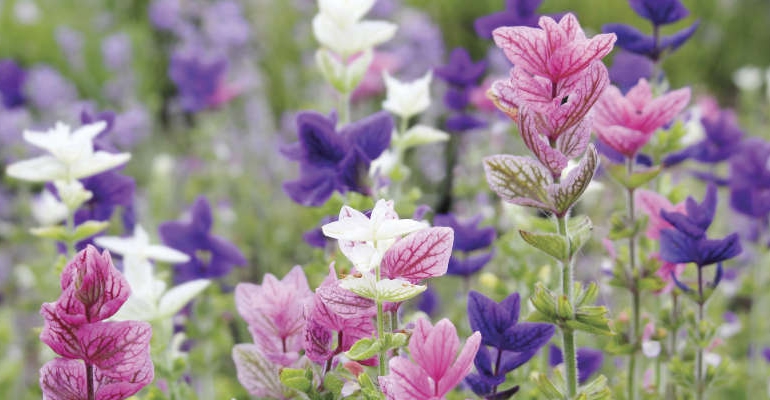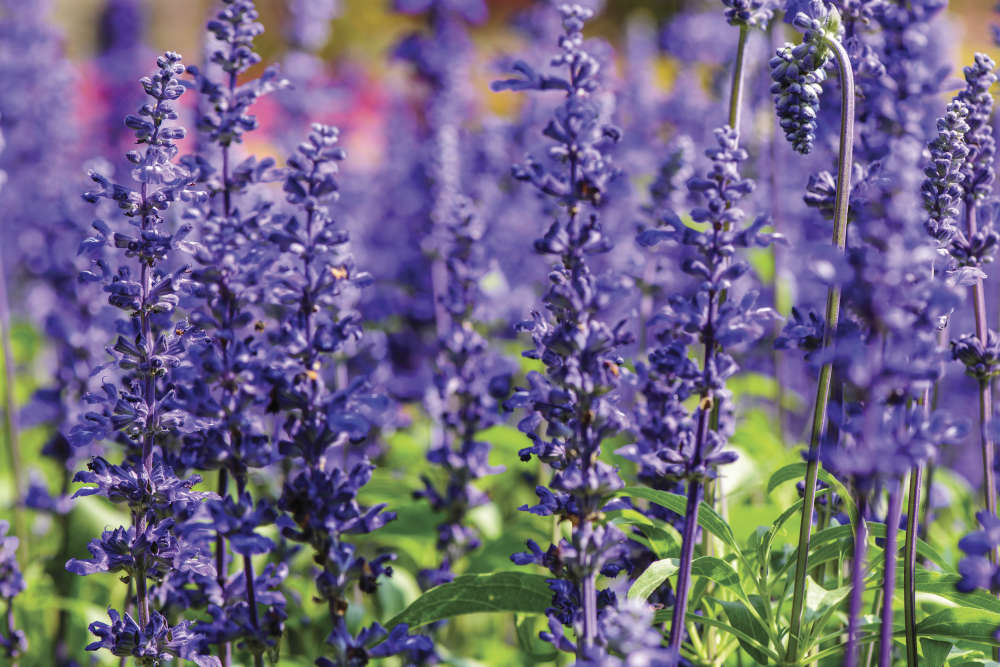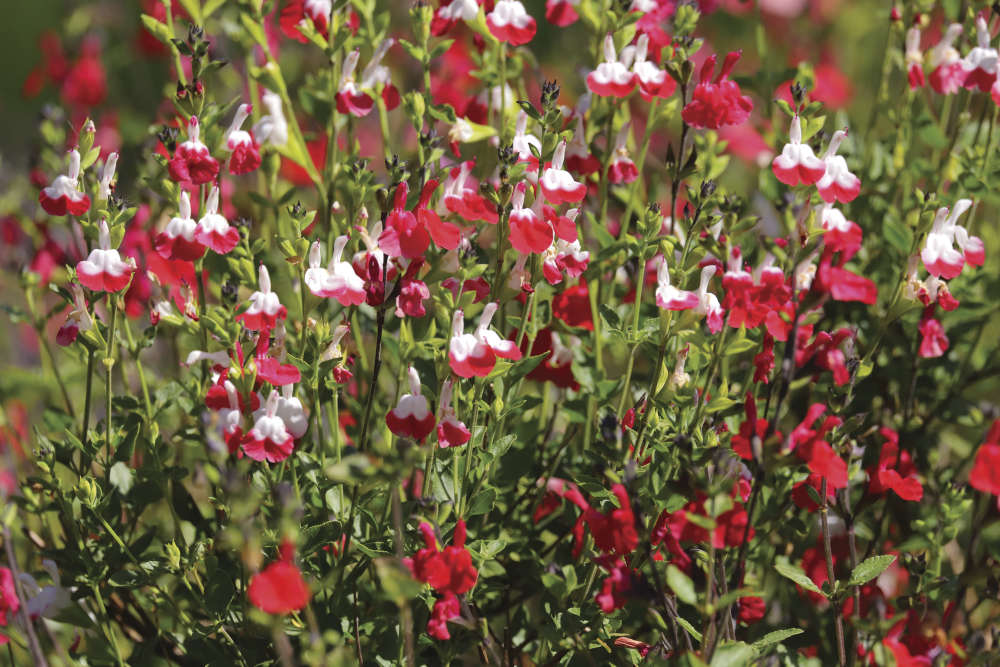
If you’re looking for easygoing, heat-tolerant plants with a long-flowering season, (and who isn’t?) you can do no better than salvias, writes Flo Whitaker
Plants, like people, have differing personalities. Some, (think peonies and oriental poppies), behave like flamboyant superstars; making brief, show-stopping appearances before flouncing off-stage. However, to create an interesting garden, you also need a strong supporting cast. Perennial salvias belong in this category; less shouty, perhaps, but they are real workhorses and invaluable for keeping the performance going until late autumn.
Salvias belong to a huge genus of plants called Lamiaceae; a group which also includes mint and nettle. Verbena and glandularia are closely related – they share a distinctive family trait of unusual, square-profile stems.
Salvias revel in a sunny, sheltered spot in well-drained soil and are perfect for a mixed border. Taller varieties, such as ‘Amistad’ and ‘Hadspen’ can grow up to 1.5 metres high and may require light staking, but salvias are mostly self-supporting. Allow them to gently lean into their neighbours; they will fill gaps as they ‘weave’ through a border, helping to make a visually cohesive picture.

As well as flowers, salvias also produce ‘bracts’ (modified leaves) that continue to give structure and interest when blooms fade. These bracts are often boldly-coloured and really zing when set against autumn dahlias and chrysanthemums. Salvia ‘Black and Blue’, with its astonishing pure blue flowers, (very unusual in the plant world) and jet-black bracts is, perhaps, the most eye-popping colour combination of all, but my absolute favourite Salvia is ‘Nachtvlinder’ (40 - 60 cms). Everything about it is beautiful – including its name, which translates as ‘Night Moth’. Regal purple flowers on dainty stems are borne above foliage that smells deliciously of blackcurrants. It’s a gem of a plant.
Many salvias are labelled ‘hardy’, but, in truth, they struggle in wintery wet soils. I garden on heavy clay and assume all salvias are non-hardy for me, no matter what the plant labels promise. I mostly grow them in pots; either plunged directly into the border during summer, or in a patio pot display. This allows them to be moved into a frost-free greenhouse in October. I also take cuttings of favourite varieties in summer – they root very easily.
Although culinary salvias, (Sage) carry smaller flowers over a short-ish period, they offer handsome, aromatic foliage in green, purplish, silvery or variegated shades. However, Salvia elegans (60 - 90 cms), is the different, somewhat eccentric member of this group. It can bloom for months, producing vivid pink flowers and pineapple-scented leaves – perfect for garnishing summer drinks.
There’s still time (just!) to sow seeds of Salvia viridis; a fast-growing annual with complimenting pink and purple bracts. Quick to germinate and unfussy about soil type, viridis reaches 40 - 50 cms, lasts for a week in a vase and looks particularly good arranged with sweet peas and roses.


 Blooming Times: Happy Faces
Blooming Times: Happy Faces
 Blooming Times: Winter Sparklers
Blooming Times: Winter Sparklers
 Homes Extra: Restore, Repair, Recycle
Homes Extra: Restore, Repair, Recycle
 Home Style: A Scandi Winter's Tale
Home Style: A Scandi Winter's Tale
 Blooming Times: Winter Wonders
Blooming Times: Winter Wonders
 Home Style: Bold, Brave & Beautiful
Home Style: Bold, Brave & Beautiful
 Blooming Times: The Answer Lies in the Soil
Blooming Times: The Answer Lies in the Soil
 Blooming Times: Heavenly Hyacinths
Blooming Times: Heavenly Hyacinths
 Legendary Builds with Phoenix Construction Services
Legendary Builds with Phoenix Construction Services
 Blooming Times: Know Your Enemy
Blooming Times: Know Your Enemy
 Bespoke Dreams from Eridge Green Kitchens
Bespoke Dreams from Eridge Green Kitchens
 10 Hot Years: iFit Fires & Flues
10 Hot Years: iFit Fires & Flues
 Home Style: Bold Type
Home Style: Bold Type
 Blooming Times: The Sky's the Limit
Blooming Times: The Sky's the Limit
 Home Style: A Better Way of Life
Home Style: A Better Way of Life
 Homes Extra: Shed Space
Homes Extra: Shed Space
 Blooming Times: Top of the Pots
Blooming Times: Top of the Pots
 Kids Zone: Get the Kids Growing
Kids Zone: Get the Kids Growing
 Home Style: Pastures New
Home Style: Pastures New
 Homes Extra: Let There Be Light
Homes Extra: Let There Be Light